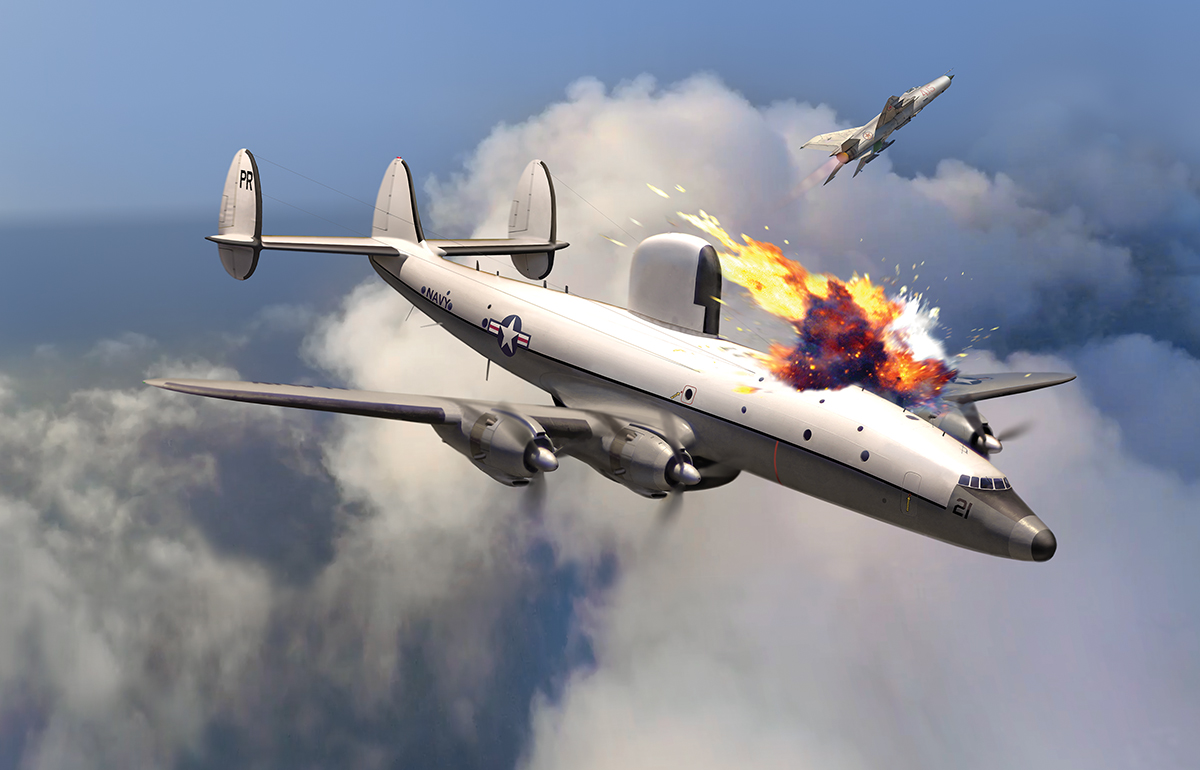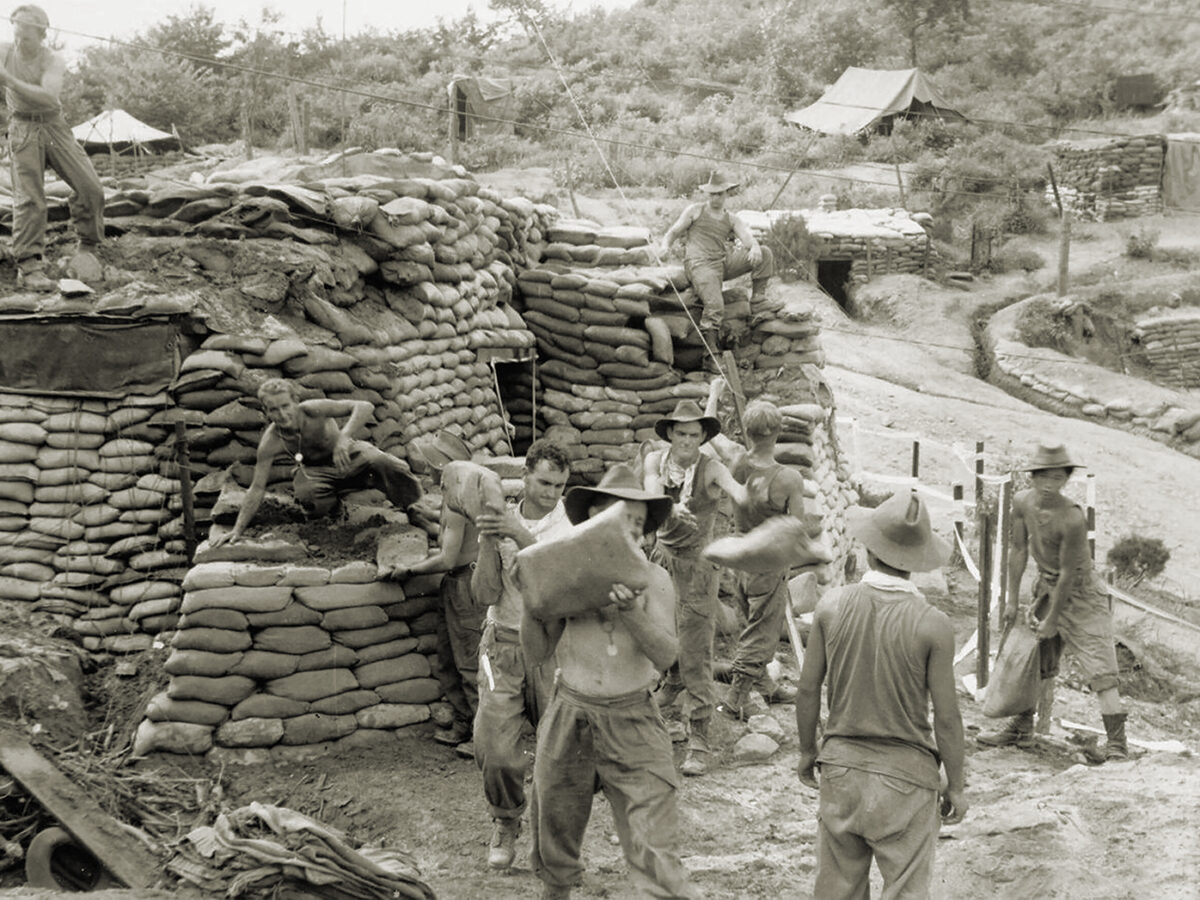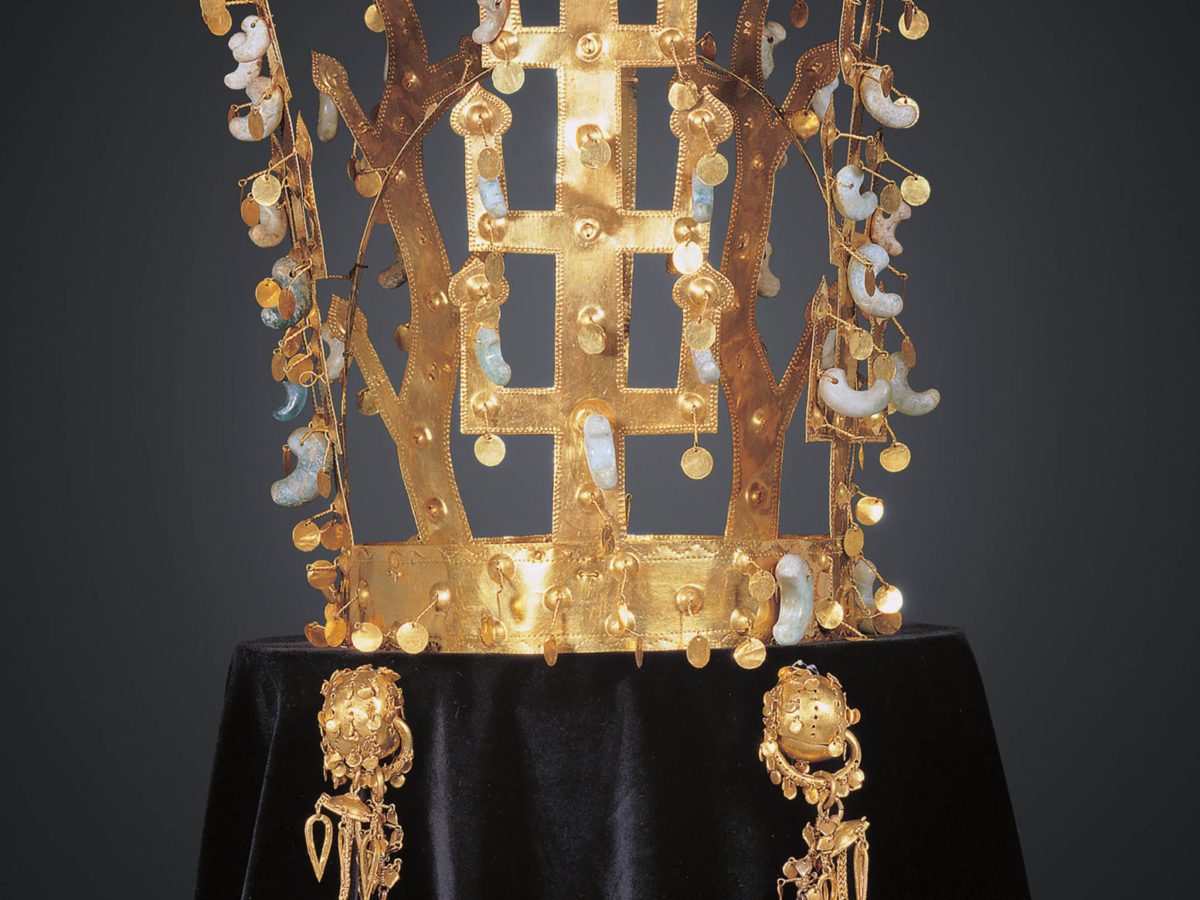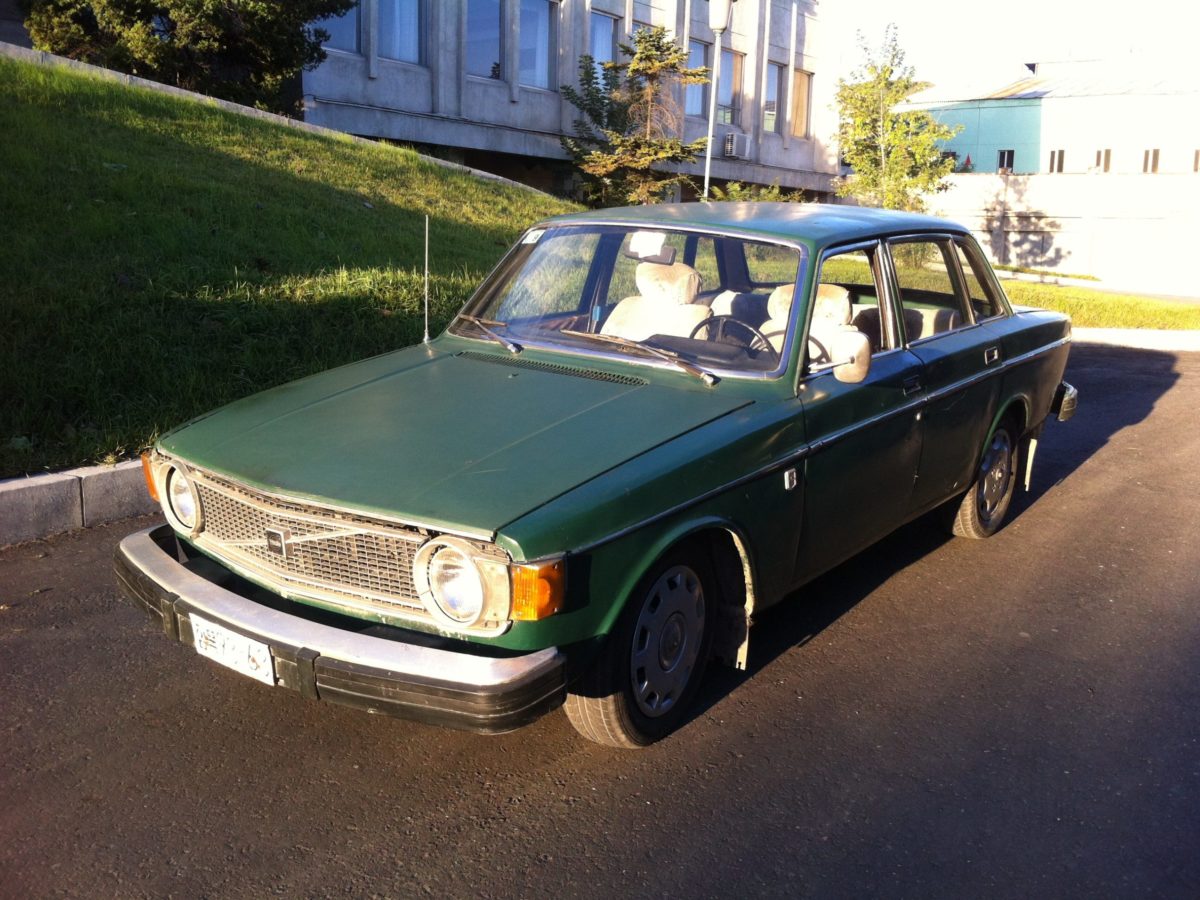It was over quickly. On April 15, 1969, a North Korean MiG-21 shot down an unarmed U.S. Navy Lockheed EC-121M reconnaissance plane over international waters.
All 31 on board—30 sailors and one Marine—perished, the largest single loss of American aircrewmen during the Cold War. Only two bodies were ever recovered.
President Richard M. Nixon considered and ultimately rejected a military response. Over time, understanding of what the mission entailed evolved with the gradual release of classified documents. What has never changed, however, was the tragic loss of American lives and the enormous toll it had on the crew’s families.
The shootdown occurred during the height of the Cold War, when tensions between the United States and North Korea were at a peak. The Korean War had ended 16 years earlier with 37,000 U.S. personnel killed in action and both countries signing an armistice, not a peace treaty. After that 1953 armistice, violent incidents continued, such as the North trying to assassinate South Korean President Park Chung-hee in 1968.
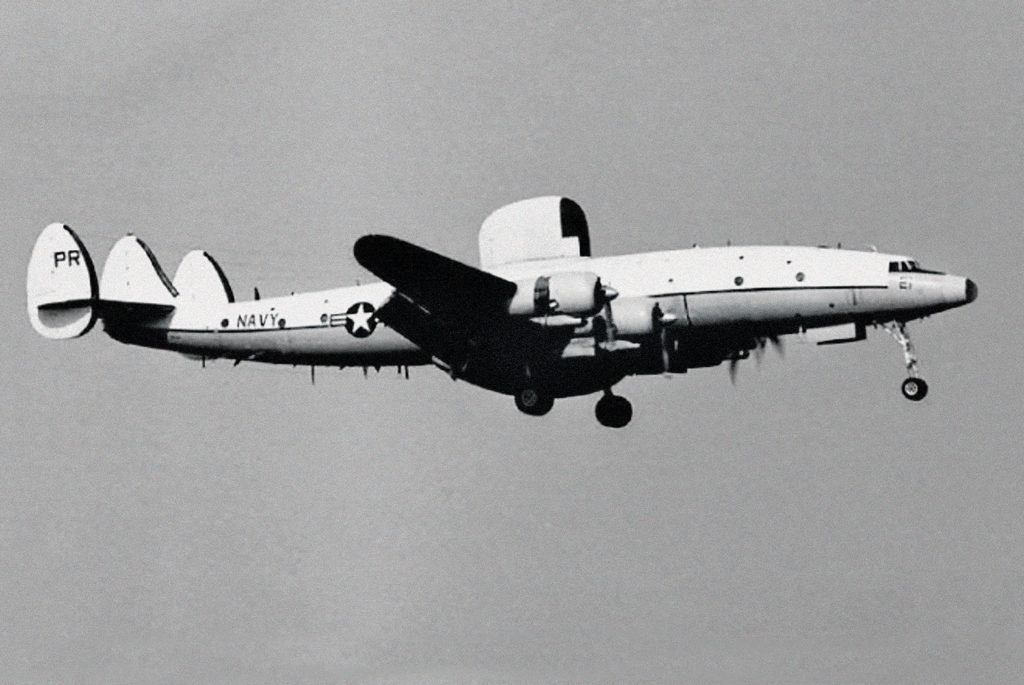
In January 1968, North Korea seized the Navy intelligence ship USS Pueblo. President Lyndon B. Johnson and his advisers concluded that diplomacy was the best way to resolve the situation, which ultimately led to the crew’s release in December. Some historians refer to the perilous 1966-69 period as the “Second Korean War.”
Both the Navy and the Air Force had active aerial surveillance and electronic intelligence gathering capabilities in the Atlantic and Pacific oceans. Electronic Countermeasures Squadron 1 (VQ-1) was established in June 1955 at Naval Air Station (NAS) Iwakuni in Japan. Electronic reconnaissance was performed by highly trained personnel who conducted their missions in sophisticated aircraft.
VQ-1 operations were shifted to NAS Atsugi, Japan, in 1960 and the squadron was renamed Fleet Air Reconnaissance Squadron 1 (though the VQ-1 designation remained). The squadron had responsibility for territory throughout Asia and the Pacific, operating from bases in South Vietnam, the Philippines and Thailand, as well as from aircraft carriers. During the Vietnam War, the Atsugi base contingent grew to 1,000 American servicemen.
Risk was a constant companion for the airmen of VQ-1 and other intelligence units. In June 1959, North Korean MiG-17s attacked a Martin P4M Mercator reconnaissance plane about 50 miles east of the Demilitarized Zone. The pilot was able to land the damaged aircraft, though the tail gunner suffered serious wounds. Six years later, MiG-17s severely damaged an Air Force Boeing RB-47 (the reconnaissance version of the Stratojet) about 80 miles off the North Korean coast.
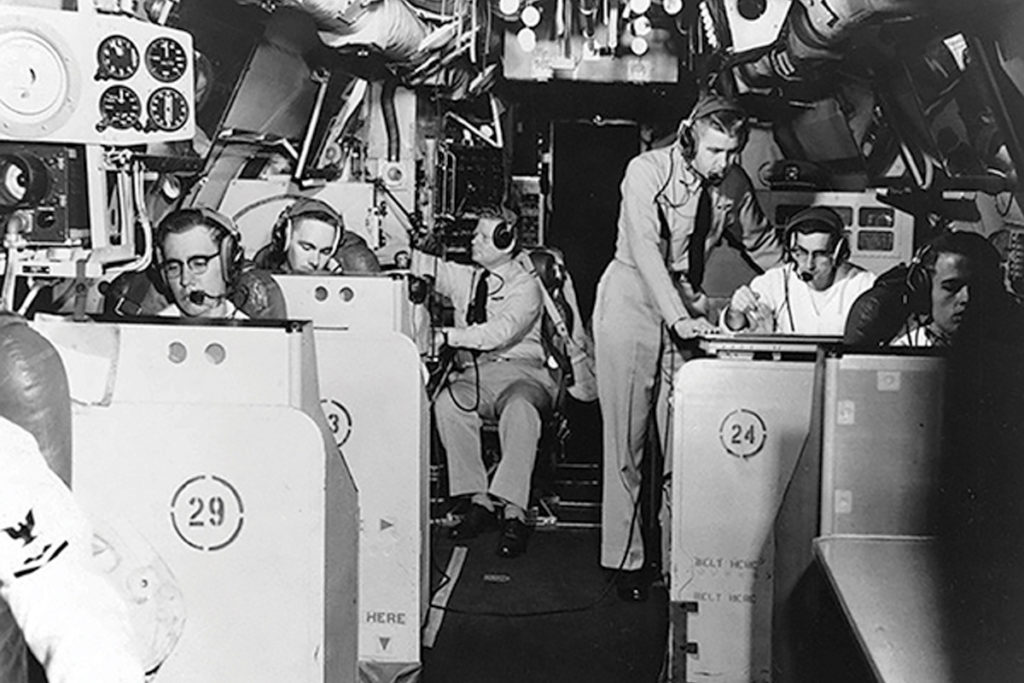
With the 1954 introduction of the WV-2 Warning Star—a military variant of Lockheed’s L-1049 Super Constellation airliner—the Navy possessed a powerful new electronic reconnaissance platform. Nicknamed “Willy Victor,” the Navy’s military Connie was redesignated EC-121 in 1962 as part of the Tri-Service aircraft designation system. The Warning Star typically had a flight crew of five men—two pilots, two navigators and an observer—as well as crew chiefs, maintenance, radar and electronics personnel onboard. It was a big airplane: more than 116 feet long, with a wingspan over 126 feet and weighing almost 70,000 pounds empty. Four Wright R-3350-42 18-cylinder radial engines provided the power. Range was about 4,200 miles, with a service ceiling of 25,000 feet.
In 1959-60 Warning Star Bu.No. 135749 was modified by the Martin Company with radars installed in upper and lower radomes. Redesignated an EC-121M in 1962, the aircraft utilized AN/APS-20 radar technology originally developed during World War II by the Massachusetts Institute of Technology. A small team of military and civilian technicians, known as the “Bicycle Shop,” helped VQ-1 make ongoing modifications and upgrades to the electronics equipment.
Atsugi-based EC-121M crewmen had a heavy workload. Crews would fly to Danang, South Vietnam, to conduct surveillance for Navy, Air Force and Marine missions and alert aircrews about surface-to-air missiles. After returning to Atsugi for maintenance, they would fly missions surveilling the Soviet Union, China and North Korea. The threat of hostile fighters intercepting the flights was ever-present, though not an overwhelming concern. Naval Security Group (NSG) personnel supporting these missions were at the nearby Kamiseya base.
Risks to the missions increased with the addition of the electronics equipment, as the added drag and weight limited the EC-121M’s top speed to about 220 knots. Furthermore, EC-121Ms were unarmed and had no electronic countermeasure equipment onboard, making them easy targets. Given the aircraft’s inability to defend itself, Senator Strom Thurmond on the Armed Services Committee characterized it as a “flying Pueblo.”
Crews on these missions were all naval personnel or Marines, some on assignment to the NSG. Work included collecting non-Morse communications, analyzing radar and disseminating signal intelligence information. A teletype station was connected to Kamiseya. Because satellite communications were not widely available, some crew members were trained in the still predominately used Morse code. Linguists fluent in languages such as Korean and Russian were on board to translate and interpret intercepted voice communications from aircraft, ships or ground bases.
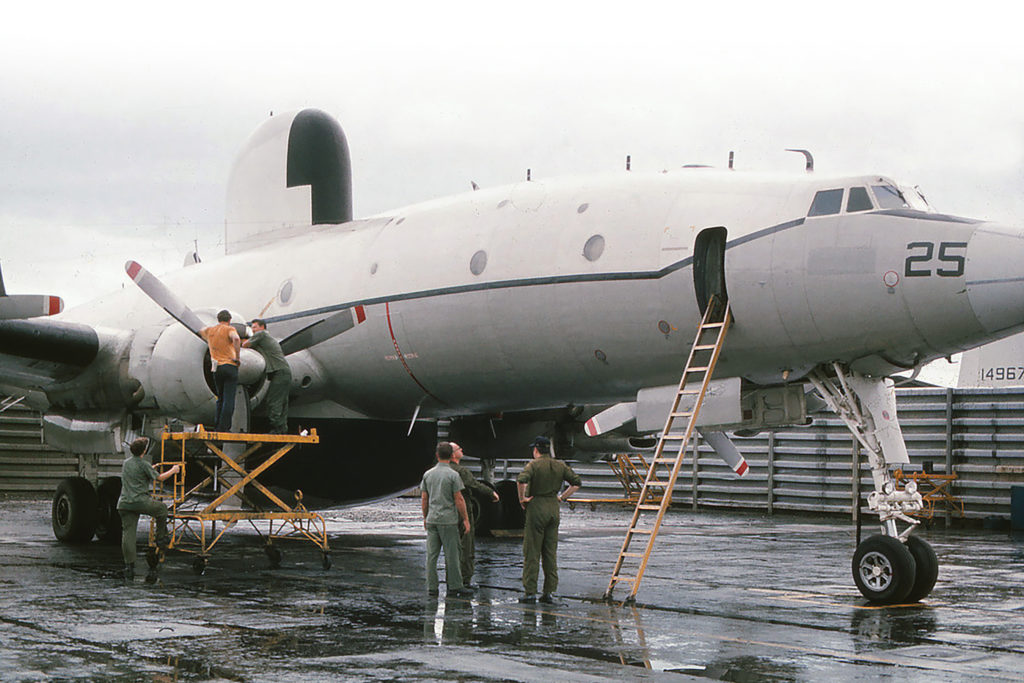
The overall umbrella name for recon missions was the Peacetime Aerial Reconnaissance Program (PARPRO), which in turn had naval (“Beggar Shadow”) and Air Force (“Commando Clinch”) components. Beggar Shadow missions monitored aspects of the North’s air defense capabilities and communications. The extreme northeastern corner of North Korea that borders China and the Soviet Union was an area of particular interest for the military and intelligence communities. Typically, the Joint Chiefs of Staff and the Defense Intelligence Agency approved individual missions.
On April 11, 1969, General Charles Bonesteel III, commander of U.S. forces in Korea, sent a message to commander in chief, Pacific Command (CINCPAC) Admiral John McCain Sr. about the increasing tensions with the North. Bonesteel noted that during recent military armistice commission meetings, the North Koreans had been particularly vehement about “provocative actions” by United Nations forces. Bonesteel suggested “aircrews be especially alert and prepared to abort at the first indication of any North Korean reaction.”
CINCPAC then advised the Pacific and Seventh fleet commands about these concerns and told them to use extra caution near North Korean territory. Navy Lt. Cmdr. James Overstreet, who commanded the April 15 flight, was briefed of these warnings in advance.
The mission was officially characterized as “low-risk.” From November 1968 to April 1969, 14 recon sorties had been flown near North Korean territory with little issue. Adding to General Bonesteel’s concerns, however, the North Korean air force deployed two of their advanced MiG-21 “Fishbed-F” fighters to Hoemun Airfield in late March 1969. Although Hoemun was primarily a training base, it was the closest launch point to Beggar Shadow mission tracks, which usually followed the same route.
Mission preparations were routine. Aviation Structural Mechanic (Safety Equipment) 2nd Class (AME2) Greg Andrews of VQ-1 helped prepare the aircraft, including packing life rafts for this largely overwater effort. Navy ground support personnel signed out the cryptologic equipment early on the 15th to Lt. (j.g.) Robert Sykora, who would be onboard the EC-121. Fourteen hours later, after the shootdown, these same ground personnel would send out a top-secret message indicating the codes were likely compromised.
Warning Star 135749 (PR-21), call sign “Deep Sea 129,” took off at 0700 hours with eight officers and 23 enlisted personnel on board. (This complement was larger than for a typical mission as it included Navy personnel in training.) The planned flight path would keep the EC-121 at least 50 miles outside the North Korean border and it would then fly to Osan Air Base, about 40 miles south of Seoul, South Korea. Flight time was estimated at 8½ hours—including 2½ times around a “racetrack loop” essentially parallel to the North Korean shore—before the aircraft headed to Osan.
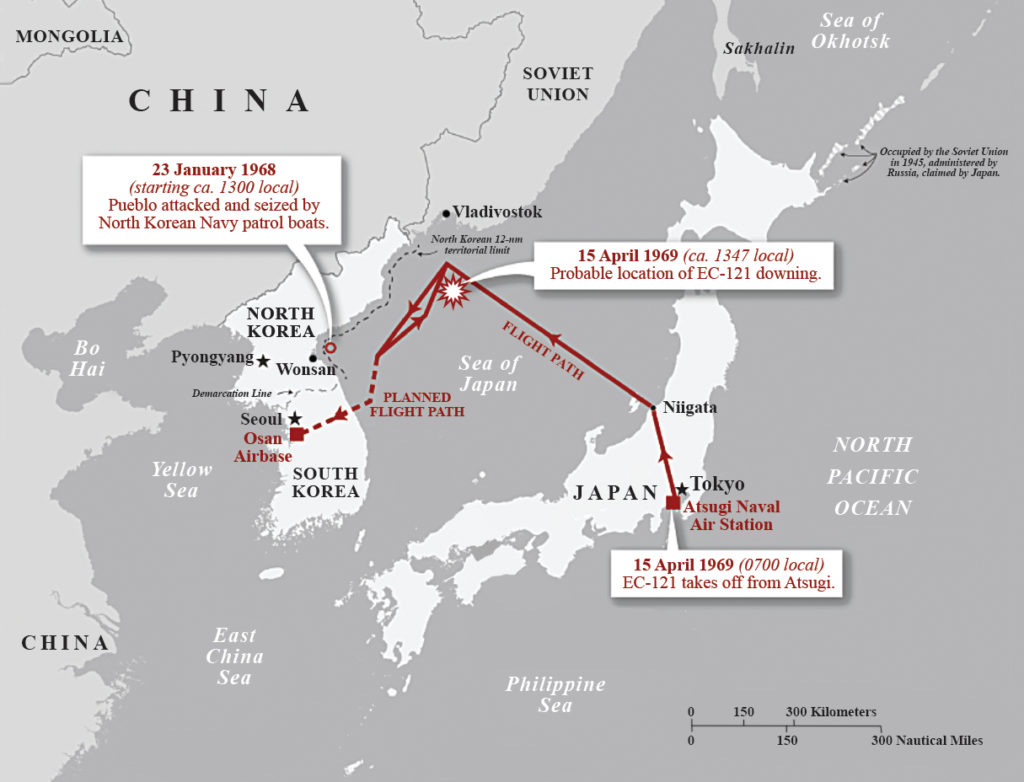
A very condensed timeline for the April 15 mission follows, all local Atsugi times:
- 13:00—Kamiseya received a routine communications check from Deep Sea 129, which was to be the aircraft’s last transmission.
- 13:30—The EC-121 approached the north end of the loop and began turning east.
- 13:40—A warning was sent to the EC-121 crew that North Korean air force activity was being tracked. The two MiG-21s at Hoemun had taken off and appeared to be on a course to intercept Deep Sea 129. (Since the EC-121 lacked the communications equipment to participate in an advisory warning system set up by the National Security Agency, it is unclear if Deep Sea 129 received this or a subsequent warning.)
- 13:45—The commander of the 314th Air Division at Osan ordered two Convair F-102 Delta Daggers launched on a combat air patrol to a position where they could assist the EC-121.
- 13:46—An additional warning of the MiGs’ approach was issued to the EC-121 (one flew a defensive patrol 65 miles from Deep Sea 129 while the other made the attack).
- 13:47—Estimated time of the shootdown, when the EC-121 disappeared from radar. No distress call was received. EC-121 emergency procedures were to dive to a low altitude if attacked; thus the disappearance of the EC-121 from radar did not immediately indicate that a tragedy had occurred.
- 14:00—Kamiseya attempted a routine hourly communications check with the aircraft, but no reply was received. Concern escalated and all subsequent communication efforts failed.
At this time, Captain Frank Wilson, who was responsible for command center communications, noted that the base deputy commander immediately ordered two Convair F-106 Delta Darts into action at 14:53. Tragically, it was too late.
The first confirmation that the EC-121 had been shot down came the next morning when the crew of a Navy Lockheed P-3 Orion spotted debris—uninflated life rafts, paper and dye markers—two nautical miles northeast of the presumed downing location. At the Navy’s request, the Soviets’ Vladivostok-based Pacific Fleet, which was closest to the scene, was first on site to render support. The Soviets provided two destroyers and an anti-submarine ship, likely for goodwill plus the opportunity to monitor the U.S. fleet and obtain intelligence information. The search-and-rescue operation marked the first cooperative meeting of naval ships between the two Cold War antagonists since World War II.
GET HISTORY’S GREATEST TALES—RIGHT IN YOUR INBOX
Subscribe to our HistoryNet Now! newsletter for the best of the past, delivered every Monday and Thursday.
American aircraft arriving in the search area established contact with the Soviet anti-sub ship, which revealed that it had picked up debris from the plane but spotted no survivors. One of the destroyers sent small boats to collect debris marked by a smoke signal dropped by a U.S. aircraft. The Soviets subsequently recovered the bodies of two crew members, Lt. (j.g.) Joseph Ribar and Aviation Electronics Technician 1st Class (AT1) Richard Sweeney, and turned them over to the destroyer USS Henry W. Tuckerwhen it arrived on the scene.
There were reports of flare sightings and beepers, thus hope for the survival of some crew, but these were never confirmed. The search effort was suspended on April 19 and the remaining 29 men were listed as missing in action. They were declared as killed in action on May 2.
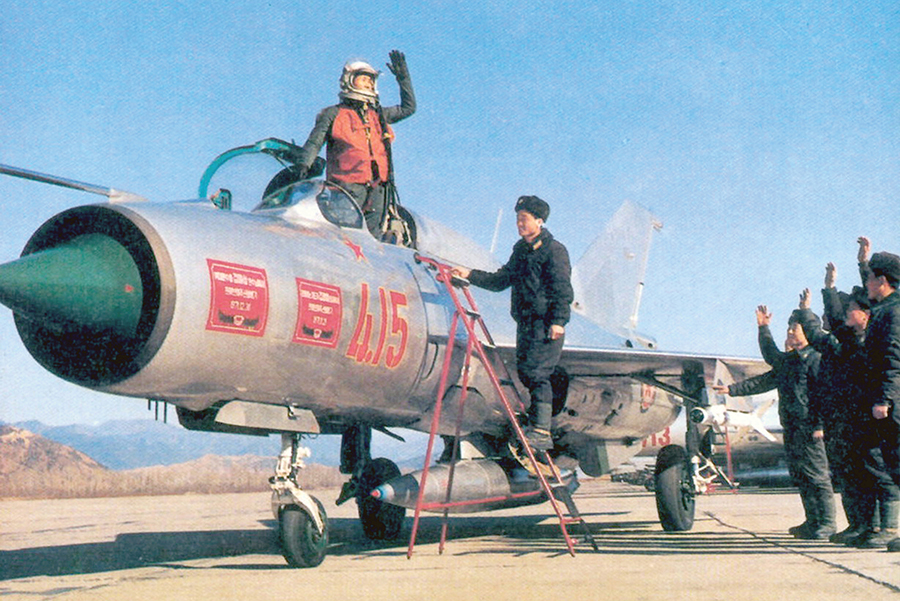
The North Koreans alleged the flight was over their territory, while the U.S. has consistently maintained it was over international waters. Whereas North Korea claimed sovereignty up to 12 miles offshore, the shootdown occurred approximately 80 miles off the coast.
A North Korean radio broadcast portrayed the downing of the alleged intruder as “a brilliant battle success…with a single shot at a high altitude….” The MiG pilot credited with downing the EC-121 was Kim Gin-ok, an 11-victory Korean War ace recognized as the nation’s top fighter pilot. Based on wreckage recovered from the Sea of Japan, a joint Navy–Air Force investigation later concluded that the Warning Star had sustained major damage from at least one air-to-air missile, likely an AA-2 Atoll (a Soviet copy of the AIM-9 Sidewinder).
Recommended for you
Back at Atsugi, casualty assistance calls officers went to work in the difficult days following the shootdown. Many crew members had families on base who were dealing with the emotional, financial and logistical impact of the tragedy thousands of miles from home.
President Nixon was tempted to order a military response. Options included conducting Boeing B-52 Stratofortress or carrier-based Grumman A-6 Intruder attacks and ordering the battleship New Jerseyto fire on North Korean targets.
Admiral McCain recommended a military attack: “If we operate again in the Sea of Japan only as a show of force, and without positive action, I believe that we continue to provide justification to their judgment of us as ‘Paper tigers.’” General Bonesteel, however, believed a U.S. military response would provoke a costly retaliatory strike against South Korea, resulting in heavy U.S. and South Korean casualties.
VQ-1 personnel were understandably outraged and wanted to retaliate. As President Johnson had decided with the Pueblo incident, however, Nixon considered the military options too risky. With the Vietnam War raging, a second Asian land war was politically perilous and military resources were already stretched thin. Instead, the U.S. activated Task Force 71—consisting of four aircraft carriers, New Jersey and a screen of cruisers and destroyers—to protect future intelligence flights, and a week later resumed the flights at a reduced frequency and farther away from the North Korean shore.
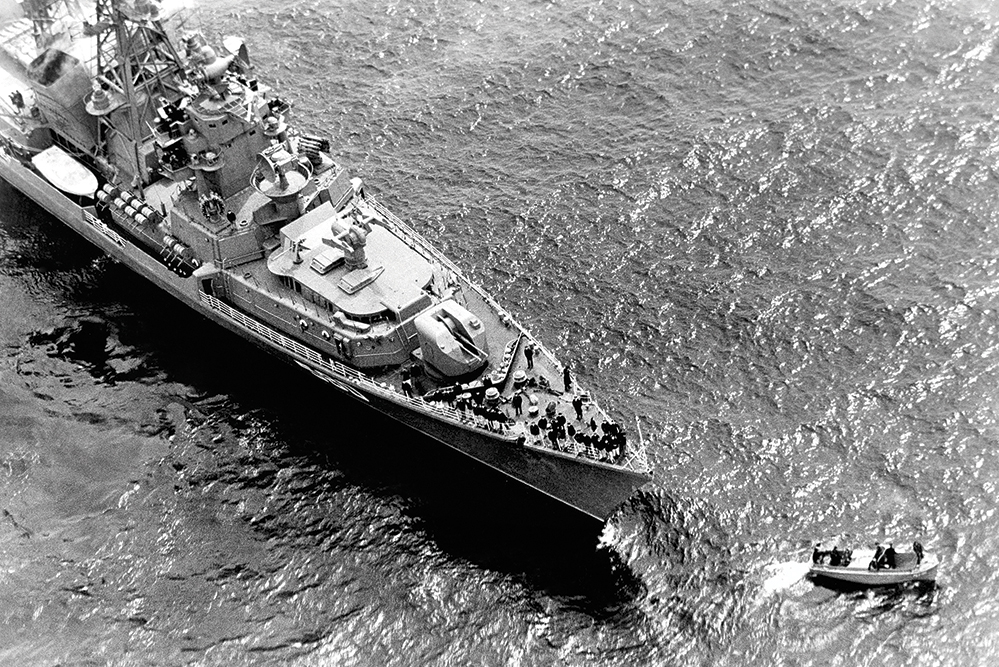
Nixon told National Security Adviser Henry Kissinger, “They got away with it this time, but they’ll never get away with it again.” Kissinger wrote in his memoirs: “I judge our conduct in the EC-121 crisis as weak, indecisive, and disorganized….I believe we paid in many intangible ways, in demoralized friends and emboldened enemies.”
While considering the diplomatic and military options, the Navy conducted a detailed review of the incident. A naval board of inquiry confirmed that the EC-121M never entered North Korean airspace, nor did the crew send out a distress call. Navy officers, intelligence officials and sailors who testified said that EC-121 flight crews normally only put on their parachutes in a bailout maneuver and under the circumstances wouldn’t have been able to jump.
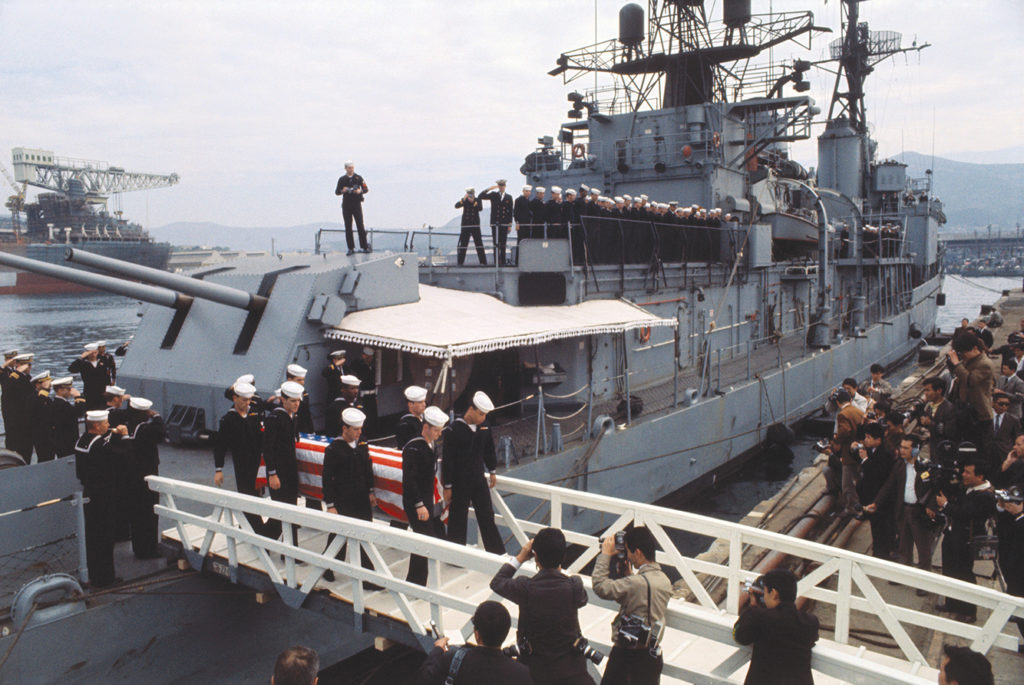
Following the investigation, the board’s primary recommendation was to improve the procedures for assessing threat levels, leading to more timely warning to reconnaissance aircraft. Additionally, the Navy prioritized upgrading the aircraft used on these missions, with EC-121s phased out of military service in the 1970s and replaced by Lockheed EP-3s, the electronic intelligence versions of the P-3 Orion. These improvements in managing PARPRO missions helped avoid further losses of aircraft despite numerous intercepts of intelligence-collection flights, until the Chinese military forced down a U.S. aircraft in 2001.
The reasons for the North Korean attack remain elusive. Some note that April 15 was dictator Kim Il-Sung’s birthday, which was a widely celebrated national holiday in the North. Nixon had referred to North Korea as a “fourth rate power” in the 1968 presidential campaign; Kim may have wanted to prove otherwise. What is certain is that North Korea has remained a very difficult military and diplomatic problem for the U.S., right up to the present day.

